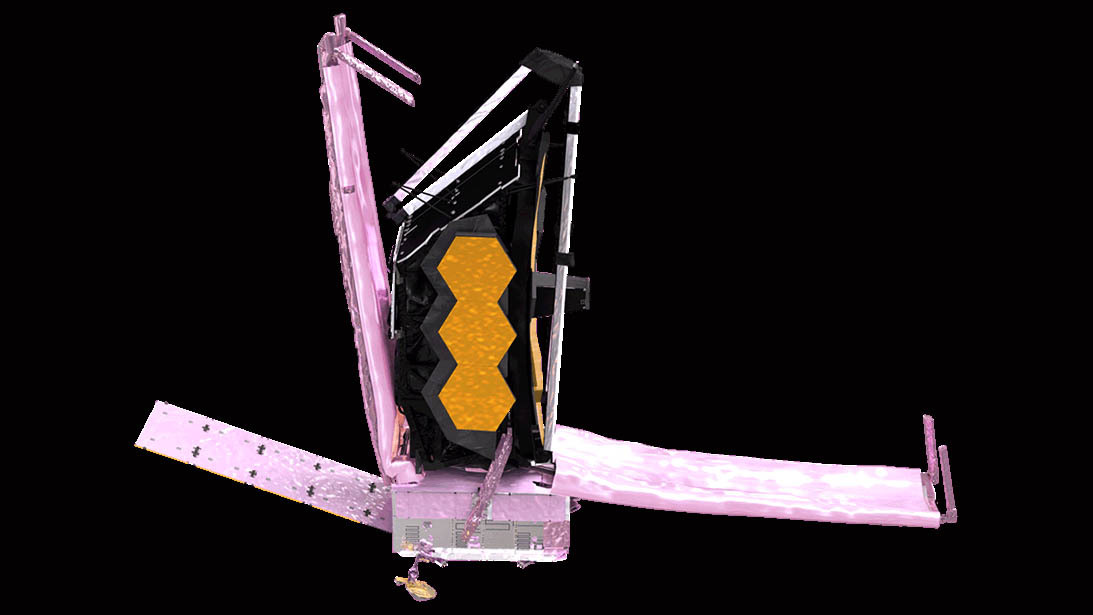James Webb Space Telescope begins unfolding delicate, massive sunshield

NASA's massive new space observatory has entered its most perilous phase yet as it begins the careful process of unfurling its delicate sunshield.
The James Webb Space Telescope launched on Saturday (Dec. 25) and will be a revolutionary new observatory focused on studying the universe in infrared light. But first, it has to survive a monthlong trek out to its final post and a carefully choreographed deployment process.
On Tuesday (Dec. 28), the spacecraft notched another key step in that deployment as it unfolded the Forward Unitized Pallet Structure (UPS) of its vast sunshield, according to a NASA statement. The process took four hours and concluded at 1:21 p.m. EST (1821 GMT), according to the agency. Webb then mimicked that process with the Aft UPS, which finished deploying at approximately 7:27 p.m. EST on Tuesday (0027 Dec. 29 GMT), the agency said in an update.
Live updates: NASA's James Webb Space Telescope mission
In photos: The Christmas launch of NASA's James Webb Space Telescope
Unfolding the forward UPS included dozens of individual steps, NASA officials wrote. The successful maneuver marks the first step in the five-day-long process of preparing the sunshield, which will protect Webb's sensitive instruments from the sun's radiation.
"While the actual motion to lower the forward pallet from its stowed to its deployed position took only 20 minutes, and the lowering of the aft pallet took only 18 minutes, the overall process took several hours for each because of the dozens of additional steps required," NASA officials said in a statement. "These include closely monitoring structural temperatures, maneuvering the observatory with respect to the sun to provide optimal temperatures, turning on heaters to warm key components, activating release mechanisms, configuring electronics and software, and ultimately latching the pallets into place."
The sunshield deployment process will likely finish around Jan. 3, although each stage of the deployment sequence is controlled from the ground and the timeline can be adjusted as NASA and its partners see fit.
Get the Space.com Newsletter
Breaking space news, the latest updates on rocket launches, skywatching events and more!
After unfolding the two UPS structures, Webb's next key steps will be to unfold the Deployable Tower Assembly, release the sunshield cover and begin unfurling the sunshield itself.
If all goes according to plan, the observatory will be in its final configuration and orbit within one month of launch. The spacecraft will orbit Earth-sun Lagrange point 2, or L2, a point located nearly about 930,000 miles (1.5 million kilometers) away from Earth on the side opposite to the sun. Like the delicate sunshield, this location is crucial for allowing the instruments to gather infrared observations.
Editor's note: This article was updated with confirmation of the deployment of the Aft UPS.
Email Meghan Bartels at mbartels@space.com or follow her on Twitter @meghanbartels. Follow us on Twitter @Spacedotcom and on Facebook.
Join our Space Forums to keep talking space on the latest missions, night sky and more! And if you have a news tip, correction or comment, let us know at: community@space.com.

Meghan is a senior writer at Space.com and has more than five years' experience as a science journalist based in New York City. She joined Space.com in July 2018, with previous writing published in outlets including Newsweek and Audubon. Meghan earned an MA in science journalism from New York University and a BA in classics from Georgetown University, and in her free time she enjoys reading and visiting museums. Follow her on Twitter at @meghanbartels.









